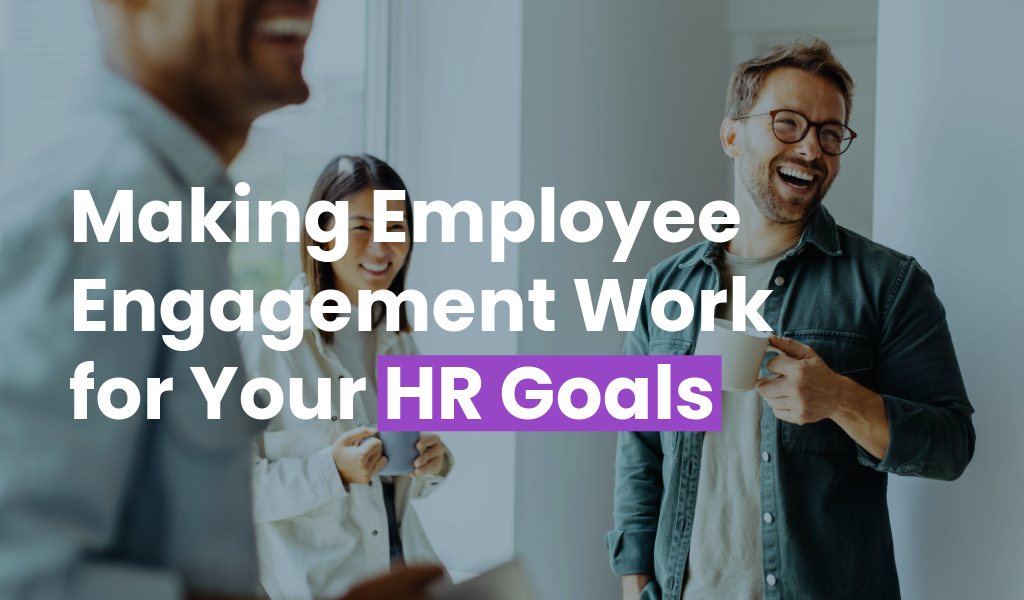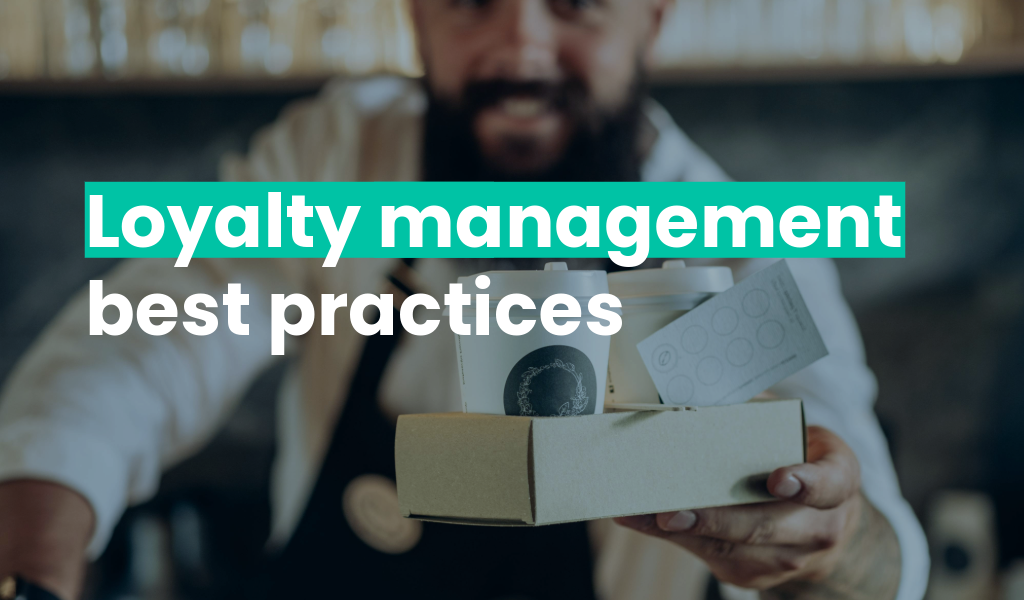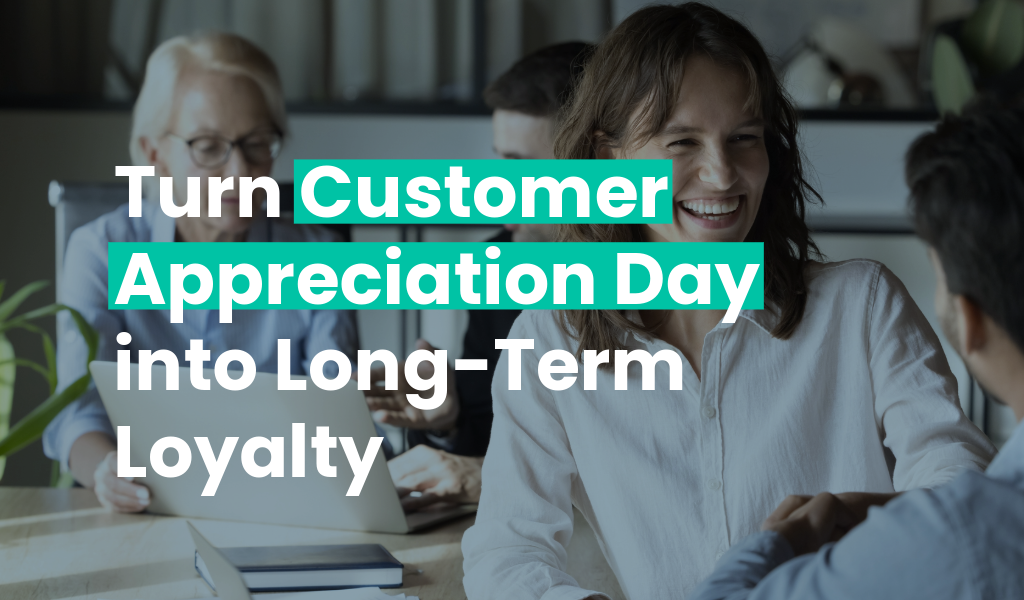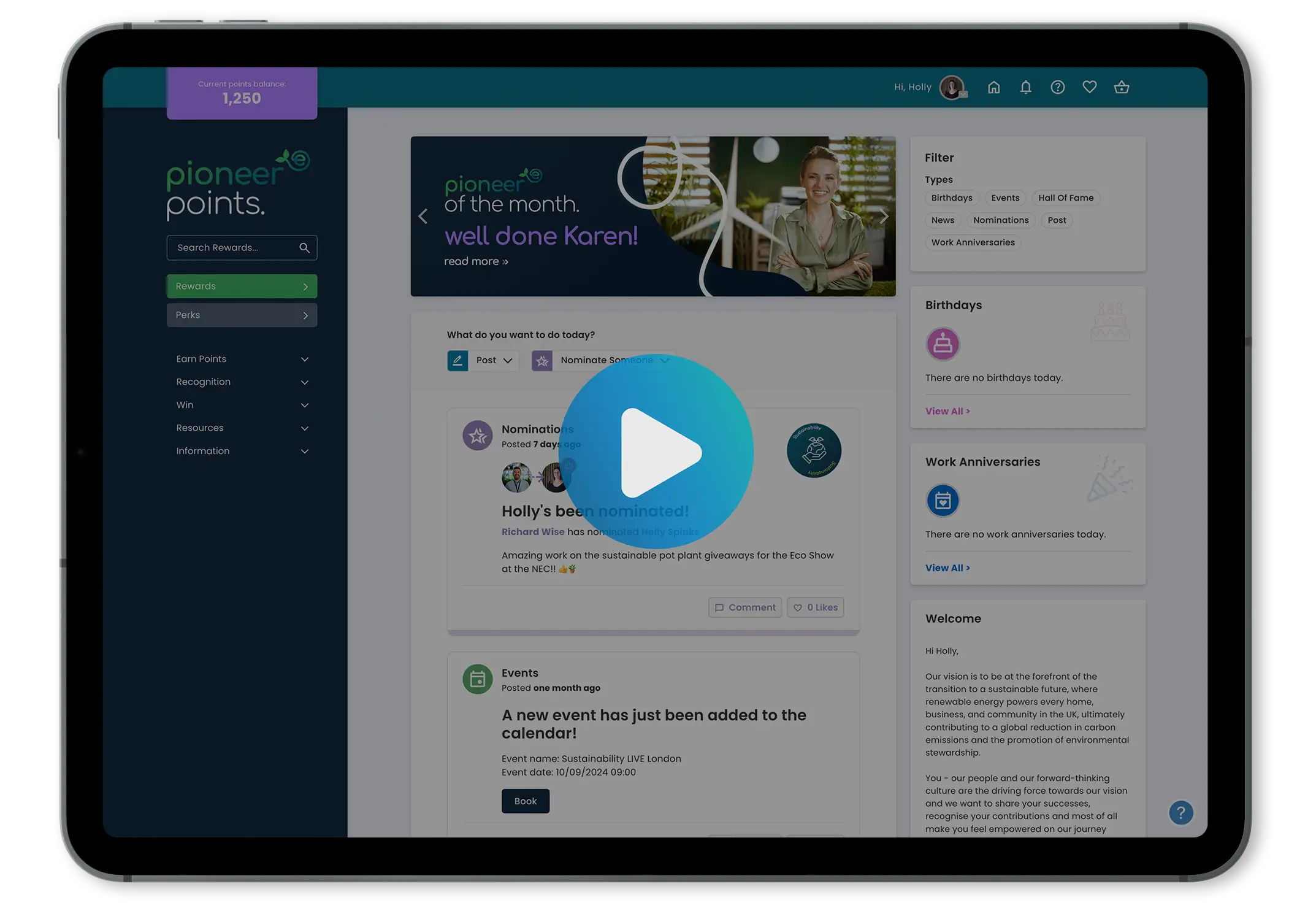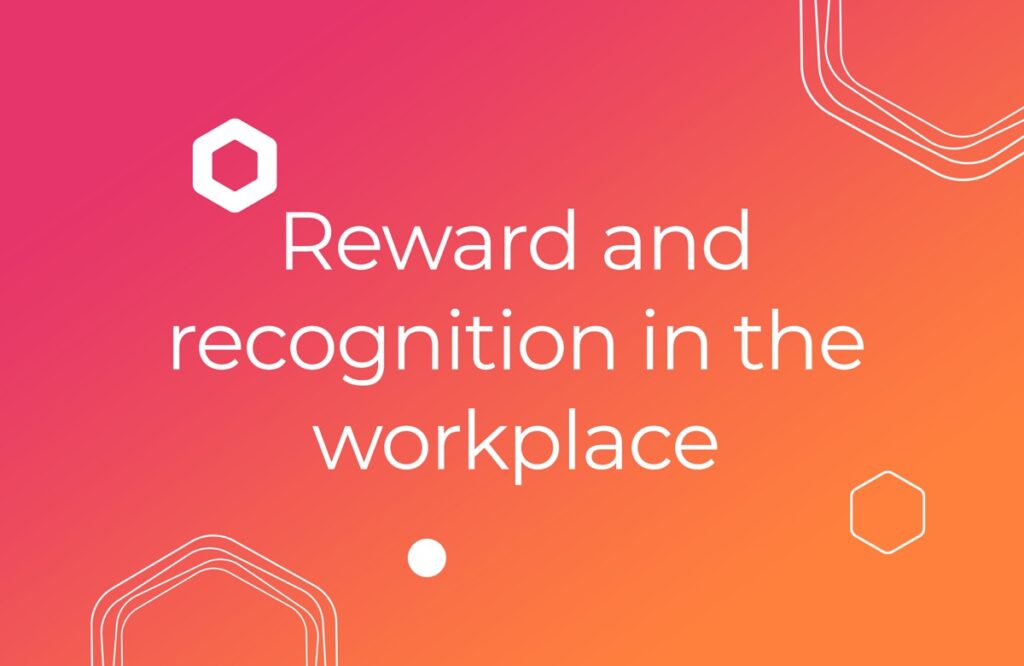


Reward and recognition in the workplace is fundamental to creating a thriving and dynamic workplace culture. With employee satisfaction, engagement, retention and productivity top of mind for HR pros worldwide, fostering a strong culture where appreciation is shown in a meaningful way should be top of the agenda.
The strategic implementation of reward and recognition initiatives helps cultivate employee motivation and loyalty and they play a pivotal role in shaping the overall employee experience.
So, what does reward and recognition entail as workplaces continue to shift in 2024? And how can employers capitalise on the potential benefits?
Let’s find out…
Skip to:
What is an employee rewards and recognition programme?
Imagine working in a place where every effort you make, every extra mile you go and every success you achieve is overlooked. If these daily efforts go unnoticed, you’ll start to feel pretty rubbish about your employer pretty quickly, right?
Now switch to a workplace where those efforts are not just noticed but genuinely appreciated…
… That’s the essence of an employee rewards and recognition programme.
These initiatives focus senior management, team leaders and colleagues on the act of recognising great work – no matter how small – every, single, day.
This builds an environment where employees feel valued and acknowledged for their dedication and efforts towards the company. And when employees are confident that their hard work will be recognised, they are more likely to take initiative and go above and beyond in their roles.

What’s the difference between Rewards and Recognition?
Rewards and recognition are two terms often used interchangeably. Both are essential components of a comprehensive employee appreciation strategy, but in fact they serve different purposes and operate on different principles.
Rewards focus on motivating specific performance outcomes through tangible incentives.
Recognition emphasises fostering a positive work culture through non-material appreciation of ongoing efforts and behaviours.
When used together effectively, rewards and recognition in the workplace can contribute to higher employee engagement, with a knock on effect of greater organisational success.
Here is a breakdown of the differences between rewards and recognition:
Rewards:
- Nature: Rewards are tangible and extrinsic, meaning they involve concrete benefits such as bonuses, pay raises, gift cards or other forms of financial compensation. These rewards provide employees with a direct material benefit.
- Focus: Rewards are outcome-based, meaning they are given in response to achieving specific goals and targets set by the organisation. They are typically tied to measurable performance metrics or results, such as meeting sales quotas or completing projects by the deadline.
- Type: Rewards operate on a transactional basis, where employees receive compensation or benefits in exchange for their performance or achievements. This creates a clear exchange mechanism where employees know what is expected of them to earn the reward.
- Purpose: The primary purpose of rewards is to motivate performance by providing incentives that encourage employees to meet or exceed their goals. By tying rewards to performance outcomes, organisations aim to drive specific behaviours and actions.
- Timing: Rewards are typically time-specific and often given at set intervals such as quarterly, annually, or upon completion of specific projects. They are planned and budgeted for in advance, usually linked to performance evaluation periods or business cycles.
- Impact: Rewards have a short-term impact on employee motivation and satisfaction. They provide immediate reinforcement for achieving desired outcomes.
Recognition:
- Nature: Recognition is intangible and intrinsic, focusing on emotional and social appreciation rather than material rewards. It includes actions like verbal praise and public acknowledgement.
- Focus: Recognition is behaviour-based, acknowledging ongoing efforts or qualities that contribute positively to the workplace.
Type: Recognition operates on a relational basis; emphasising the value of the employee as an individual and their contributions to the team or organisation’s culture and success. - Purpose: The primary purpose of recognition is to encourage engagement and foster a supportive and appreciative workplace culture. It aims to reinforce positive behaviours and strengthen the sense of belonging and commitment among employees.
- Timing: Recognition is ongoing and immediate, allowing for timely acknowledgement of efforts and contributions as they occur.
- Impact: Recognition has a long-term impact on job satisfaction and employee morale. By consistently acknowledging and appreciating employees’ contributions, organisations can build a positive work environment.

The benefits of employee rewards and recognition for employers
There is a wealth of data to demonstrate the benefits of rewards and recognition in the workplace, so employers should take note.
Here are just a few examples of their lasting impact…
 Enhanced employee engagement
Enhanced employee engagement
Employee engagement serves as a cornerstone of organisational success, influencing productivity, innovation and overall performance. Engaged employees are not only committed to their daily tasks but also deeply connected to the company’s mission and goals.
Research consistently shows that highly engaged teams outperform their counterparts by significant margins—up to 21% higher profitability, according to Gallup.
When employees are recognised and rewarded, they feel appreciated and valued, which fuels their motivation to contribute positively.
 Better retention rates
Better retention rates
High turnover rates can be detrimental to a company’s stability and growth, leading to increased costs and loss of valuable institutional knowledge.
Recognition programmes play a pivotal role in mitigating turnover risks by fostering a sense of loyalty and commitment among employees.
According to Aberdeen Group, organisations with effective recognition strategies experience significantly lower turnover rates — up to 31% lower compared to those without such programmes.
Recognised employees are more likely to remain loyal to their employers, feeling valued for their contributions and less inclined to explore opportunities elsewhere.
 Elevated motivation and morale
Elevated motivation and morale
Motivated employees are crucial for maintaining high levels of job satisfaction and performance.
CareerBuilder reports that half of employees would stay longer at their jobs if they received more recognition.
Why?
Simply because employees who feel appreciated demonstrate higher levels of enthusiasm and actively contribute to positive team dynamics, which creates a ripple effect throughout the company.
 Enhanced employee well-being
Enhanced employee well-being
Recognition programmes that acknowledge and celebrate employees’ efforts significantly contribute to their overall well-being.
In fact, research from O.C. Tanner underscores that 79% of employees cite a lack of appreciation as a primary reason for job dissatisfaction.
Feeling valued has been shown to reduce employee stress levels and enhance job satisfaction.
 Strengthened organisational culture
Strengthened organisational culture
A strong organisational culture is built on shared values and strong interpersonal relationships.
Recognition programmes play a crucial role in nurturing and strengthening this culture by fostering a sense of camaraderie and teamwork.
Globoforce research indicates that organisations with robust recognition initiatives witness a notable 32% increase in employee happiness.
This positive team dynamic not only attracts and retains top talent but also ensures alignment with the company’s mission and goals.
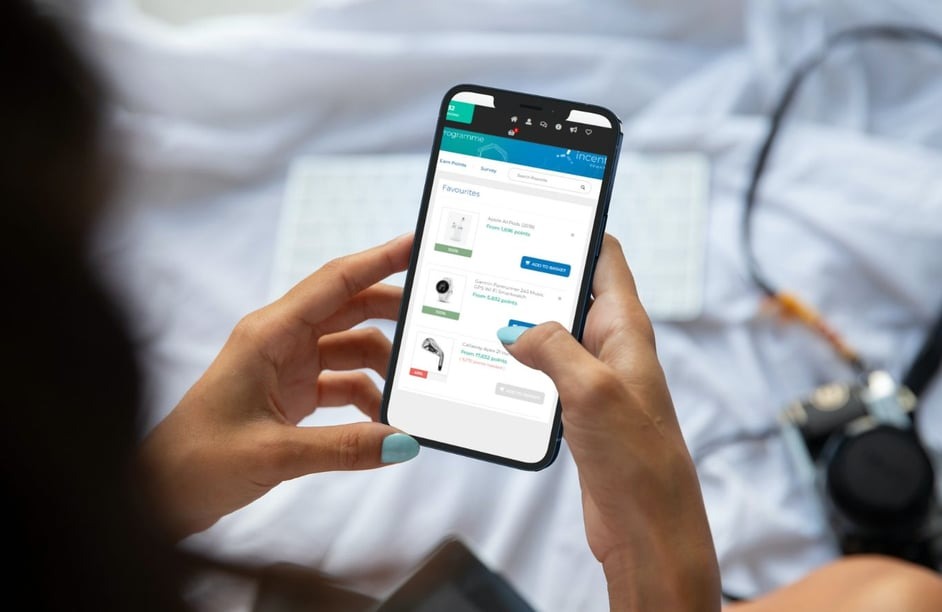
How to deliver employee rewards and recognition in your workplace
Compelling evidence, isn’t it?
Well, if you’re now keen to kickstart a rewards and recognition programme in your workplace, here is a step-by-step guide to follow:
 Establish clear criteria
Establish clear criteria
Before launching any rewards and recognition programme, it is essential to meticulously define clear criteria and objectives.
Take the time to identify specific behaviours or contributions that will merit acknowledgement within your organisation.
This step ensures that the recognition process is fair and transparent, providing employees with a clear understanding of what is valued and how recognition decisions are made.
By establishing such clarity upfront, organisations not only enhance the credibility of their recognition efforts but also cultivate a workplace culture where achievements are celebrated consistently and under shared values.
 Choose appropriate rewards and recognition methods
Choose appropriate rewards and recognition methods
When deciding on how to reward and recognise your employees, it’s essential to choose methods that truly resonate with your company’s culture, budget constraints and the preferences of your team members.
Consider a range of options, from traditional monetary rewards such as bonuses or gift cards, which provide tangible benefits, to non-monetary gestures like public praise, certificates of achievement or extra time off.
Employees are hungry to learn, so offering professional development opportunities as rewards can demonstrate a long-term investment in your employees’ growth and career advancement. This can include sponsoring attendance at conferences, providing access to courses or supporting certifications relevant to their roles.
 Make it timely and specific
Make it timely and specific
Ensuring timeliness and specificity in recognition is paramount to maximising its impact within the workplace. When acknowledging accomplishments promptly, you reinforce desired behaviours and demonstrate immediate appreciation of employees’ efforts.
Specificity in feedback is equally important. Instead of generic praise, pinpoint the particular actions, qualities or outcomes that merit recognition.
For instance, commend an employee for their exceptional problem-solving skills that led to a significant project breakthrough or recognise their dedication in mentoring new team members, highlighting specific instances where their guidance made a measurable difference.
This clarity encourages employees to replicate and build upon these behaviours, fostering a culture of continuous improvement and excellence.
 Ensure fairness and consistency
Ensure fairness and consistency
Ensuring fairness and consistency in recognition practices is essential to building a positive and inclusive workplace culture. This approach helps to build trust among employees, as everyone understands that their efforts and achievements are valued equally.
Establishing clear guidelines is crucial to prevent any perception of favouritism and to ensure that recognition opportunities are accessible to all.
 Gather feedback and adapt
Gather feedback and adapt
Regularly soliciting feedback from employees is a cornerstone of an effective recognition strategy. By actively engaging with employees to understand their preferences for recognition, organisations can significantly enhance the impact of their appreciation efforts.
Firstly, these feedback sessions provide a platform for employees to voice their preferences regarding how they wish to be recognised. Some employees may appreciate public recognition in team meetings or company-wide announcements, while others may prefer more private acknowledgments such as one-on-one meetings with their managers.
Gathering feedback also enables organisations to stay attuned to the evolving needs and expectations of their workforce. As employee demographics, work dynamics and cultural norms shift over time, so too do the types of recognition that are most valued.
Top employee rewards and recognition ideas for your workplace
There are many simple ways you can show appreciation to your employees. Below, we’ve listed some popular ideas employers use to show their teams some love.
Recognition
Employee of the month/quarter
The “Employee of the Month” programme may be seen by some as a little dated, but it can be a good place to start for certain workplaces (provided you layer more on top!).
It is a structured initiative to recognise exceptional employee performance, which involves nominating a specific employee for the reward based on criteria like productivity, teamwork and customer satisfaction, by management to ensure fairness each month.
Celebrate the chosen employee with a formal announcement or ceremony, presenting them with a certificate, plaque, or trophy, alongside a small gift. But most importantly, be sure to communicate the behaviours they demonstrated to all other employees, so they have something to strive toward – and don’t make it all about securing the next big sale!

Monthly newsletters with employee success stories
Highlighting employee success stories through monthly newsletters serve as a platform to celebrate achievements, milestones and exemplary performance.
Creating targeted newsletters for internal stakeholders ensures that these success stories reach the right audience—those who are directly impacted by or interested in the achievements of their colleagues.
By dedicating a section in the regular HR press or creating a separate newsletter exclusively for these stories, companies not only recognise individual efforts but also inspire and motivate others in the process.
Celebrate birthdays and loyal service
Small, token gestures can go a long way. Celebrating birthdays and service milestones at work ensures employees feel truly valued. Long service recognition is expected (in shorter and shorter windows as the average employee tenure decreases) and while birthday treats are not, they are a universal opportunity to celebrate the entire workforce.
So go above and beyond with some of the following ideas:
- Grant a floating day off
- Send special treats (such as cakes and pastries)
- Organise a surprise office party
Add top performers to the company’s website
An innovative step beyond the ordinary is to feature top performers prominently on the company’s website.
Traditionally, here only the leadership team receives such recognition, but creating a dedicated section to highlight top performers and their achievements can have a profound impact.
This not only acknowledges their contributions internally but also showcases their excellence to external customers and visitors. By placing them alongside the leadership team, this initiative acts as a powerful motivator, enhancing their visibility and affirming their pivotal role in the company’s success.
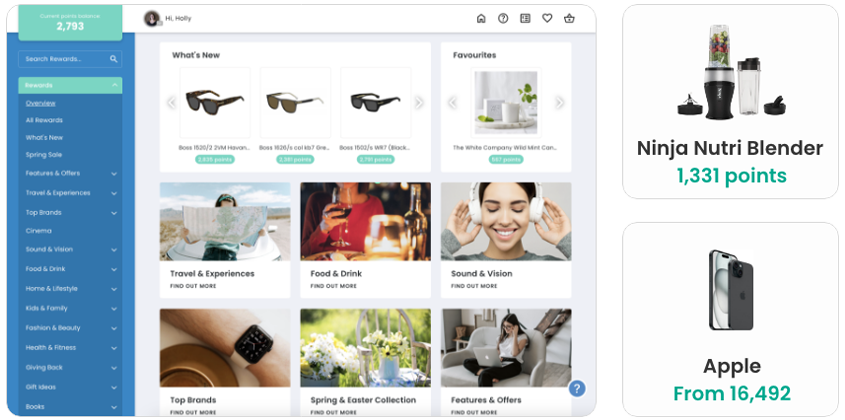
Rewards
Monetary rewards
Here are a few examples of monetary rewards that companies can offer to their employees:
- Bonuses: Bonuses are additional financial rewards given to employees for achieving specific goals or exceeding performance targets.
- Salary increases: Salary increases involve raising an employee’s base pay to reflect their contributions.
- Profit-sharing: Profit-sharing programmes distribute a portion of the company’s profits to employees based on predetermined formulas or criteria. This encourages employees to align their efforts with the company’s financial performance and promotes a sense of ownership and accountability for their efforts.
- Commission-based incentives: Commission-based incentives are commonly used in sales and performance-driven roles where employees earn a percentage of sales or revenue generated. This motivates sales teams to exceed targets and increases their earnings proportionally to their performance.
Flexible working
Flexible working arrangements afford employees the invaluable opportunity to reclaim precious time within their day. And this is the top priority of most employees post-pandemic.
Employees can allocate more time to pursue personal interests and fulfil their professional responsibilities effectively. This empowers individuals to achieve a healthier work-life balance, reducing stress and enhancing overall well-being. But it’s also to employers advantage, as it promotes productivity by enabling employees to work during their peak hours of concentration and creativity.
Here’s how flexible working can be viewed as a ‘gift of time’:
- Remote work options: Providing employees with the flexibility to work remotely, whether part-time or full-time, eliminates commuting time and allows them to manage their work schedules more efficiently.
- Flexible hours: Allowing employees to adjust their work hours to better suit their personal preferences and responsibilities outside of work (e.g., childcare, eldercare) enables them to effectively manage their time.
- Compressed workweeks: An increasing body of evidence shows that offering compressed workweeks, such as working four working days instead of five, has no detrimental impact on productivity and company success.
- Floating holidays: Granting floating holidays allows employees to choose when they take time off, outside of their standard annual leave. This flexibility accommodates individual preferences and cultural or religious observances that are meaningful to employees.

Learning and development
Investing in learning and development opportunities is a powerful way to foster growth within an organisation.
Sending employees to seminars, conferences and career development courses, as well as allowing them to choose online courses, not only enhances their skills but also inspires them to pursue greater responsibilities within the company. These opportunities act as a significant motivator and empower employees to expand their knowledge and expertise.
Christmas goodies
Embrace the seasonal spirit of goodwill and treat employees to a Christmas gift.
This doesn’t have to be much, as it is very much the thought that counts here.
Take gift cards, for example. If you have a larger workforce, it can be logistically difficult to source gifts for everyone, but multi-retailer gift cards give employees the freedom to select from a diverse array of products or services. Whether they prefer shopping for stylish clothing, upgrading their electronics, indulging in fine dining experiences, or enjoying entertainment such as movies or concerts, they’re a versatile means of reward.
If you have fewer employees, you can opt for something unique to each individual in the team.
But whatever you choose, the most important aspect for employers is to ensure that each recipient receives something that resonates with them and understands the connection between the company values and this token gesture – which should be one among many.
Special lunches
Organising lunch gatherings for top performers serves multiple purposes beyond mere appreciation—it fosters team bonding and acknowledges exceptional employee achievements.
Consider arranging a lunch party where team members can come together in a relaxed setting to celebrate successes and strengthen relationships. Alternatively, surprising top performers with snacks from their favourite restaurants, delivered directly to their desks accompanied by a personalised note of gratitude, adds a thoughtful touch.
Remember, top performers aren’t limited to sales teams alone, all departments deserve the opportunity to celebrate their great work.
Craft a top-notch rewards and recognition programme for your team
Effective rewards and recognition in the workplace is foundational to cultivating a thriving workplace culture. By acknowledging employees’ contributions, organisations not only boost morale and motivation but also foster loyalty and productivity. This creates a positive feedback loop where employees feel valued, empowered and inspired to excel.
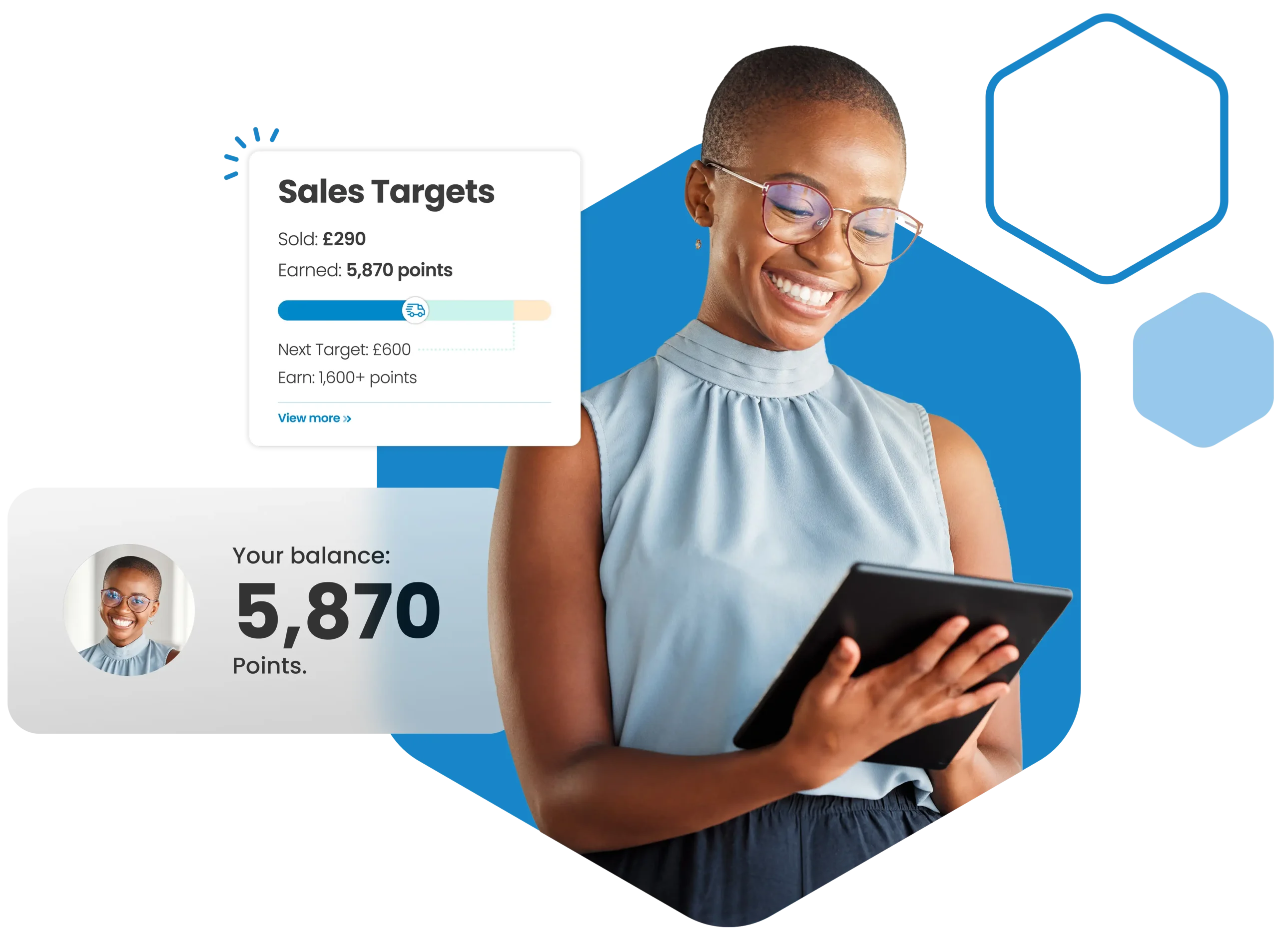

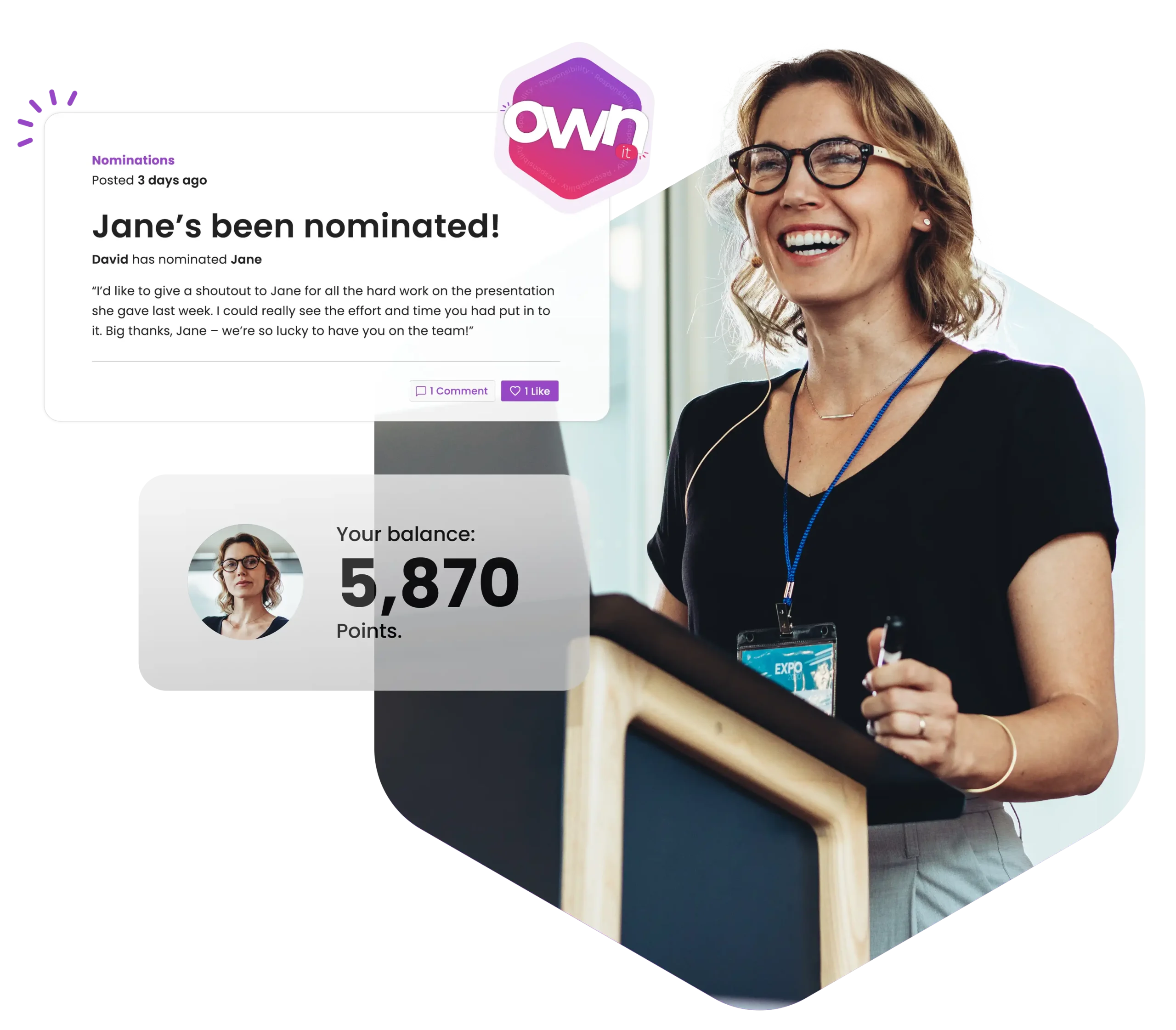
![*FREE GUIDE* How to implement a fantastic company culture in 6 steps Enter your business email for instant access. {{ include_custom_fonts({"Poppins":["Semi Bold"]}) }}](https://no-cache.hubspot.com/cta/default/5921162/interactive-188034983837.png)

